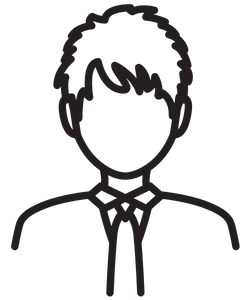

Welcome! Do you have questions about opticians and what they do? You’re not alone! Many people don’t know the full responsibilities of an optician or how they keep your vision sharp and safe. Whether you wear glasses, contacts, or both – having a better understanding of their role in your eye care can help ensure you get the best results for your eyes. Here, our amateur contributors explore why opticians are so important to maintaining eye health. Click on the links on this page to begin your journey into the fascinating world of opticians. Thanks for checking out this site.
Understanding Opticians: An Introduction
Understanding Your Eye Exam: A Guide to Common Tests and Procedures
Melvin Carpenter
Going for an eye exam can be intimidating, but it doesn't have to be. If you understand the tests that are being done and why they are important, you'll feel more comfortable during your visit to the optometrist.
History Taking:
Before the eye examination begins, the optometrist will take a history of your vision and any eye-related issues you may have had in the past. This includes questions about your medical and family history, as well as any medications you may be taking. The optometrist will also ask about any lifestyle habits that could affect your vision, such as smoking or drinking alcohol.
Visual Acuity Test:
The visual acuity test holds the utmost significance in an eye examination. During this assessment, you'll be prompted to read letters from a chart that gradually decrease in size. This test allows for a comprehensive evaluation of your visual abilities. The optometrist will assess your visual acuity at various distances to ascertain whether you require corrective eyewear.
Refraction Test:
The refraction test is used to determine what type of glasses or contact lenses are needed to correct your vision. During this test, the optometrist will use a device called a phoropter to measure how light is bent when it passes through different lenses until they find the combination that gives you the best possible vision correction.
Eye Movement Tests:
Eye movement tests are used to check for problems with eye coordination and focusing ability. During these tests, the optometrist may ask you to follow an object with just your eyes while keeping your head still or track an object moving across a screen with both eyes together.
Ocular Health Evaluation:
The ocular health assessment is utilized to detect indications of ailments or injuries in the eyes and adjacent structures, including the eyelids and tear ducts. This evaluation aims to ensure the well-being of your eyes and preserve their optimal function. During this part of the exam, the optometrist will use special instruments, such as an ophthalmoscope, to look inside each eye for signs of damage or disease.
Glaucoma Testing:
Glaucoma testing is valuable for identifying early indications of a condition characterized by heightened eye pressure, known as glaucoma. Left untreated, this can result in irreversible loss of vision. During this test, drops are placed on each eye that temporarily increases pressure inside them so that they can be measured using specialized instruments known as tonometers.
Regular exams are crucial for maintaining your overall well-being and safeguarding the sharpness of your vision. By understanding the tests and procedures used during a typical exam, you can feel more informed and comfortable during your visit to the optometrist. By scheduling regular check-ups, you can ensure the long-term health and well-being of your eyes. Take proactive steps to maintain your vision and enjoy years of optimal eye health.
For more information, contact a company such as Bay Optical.
Share